The spine keeps our body upright and allows us to move around. The spine is made up of bones called vertebrae. Between the vertebrae are supportive tissues called discs. Intervertebral (between the vertebrae) discs prevent the vertebrae from being overloaded and provide ease of movement.
A nerve network called the spinal cord runs through the middle of the spine. There are 7 vertebrae in the neck and 5 discs between them. The discs are filled with a substance called gelatinous. This substance is called the nucleus pulposus. The outside of the discs is surrounded by a hard tissue, the annulus fibrosus, and is supported by various connective tissue elements such as ligaments or muscles.
The first of the 7 cervical vertebrae is located just below the skull. This vertebra, referred to as C1, is called the “atlas”. The atlas vertebra, which is attached to the C2 vertebra below it, is involved in the rotation (turning) of the head. Eight pairs of nerve roots emerge from a total of 7 vertebrae in the neck region. Changes in the vertebral region can cause various symptoms by putting pressure on these nerves directly or on the canal.
What is a Neck Hernia?
Between the bones of the spine, called vertebrae, there is a gelatinous substance responsible for the absorption of shock waves that occur during movements. The displacement of this substance towards the spinal canal as a result of damage to the disc structure is defined as herniation.
What Causes Cervical Hernia?
As a result of traumas, strains, prolonged immobility and age-related dehydration of the disc, wear and loss of function occur in the discs. The outer layer of the disc is worn or torn and the gelatinous fluid inside leaks into the vertebrae and nerve spaces. This clinical picture is called cervical disc herniation.
The disc loses its normal properties over time and calcifies. It presses on the nerves around it. After the disc structure extends into the canal in the herniated area and the nerves in this area are affected, the body responds to these changes with an inflammatory response. As a result of these events, symptoms specific to cervical herniated discs appear.
Herniation in the neck area usually occurs in the back and sides where the annulus fibrosus, the support structure of the vertebrae, is thinner.
The main causes of cervical herniated discs are looking at a point while keeping the neck immobile for a long time, sitting in front of the computer and TV for a long time, not exercising and being in an environment with cold air conditioners.
Sometimes the problem may only be structural. Familial factors are also important in cervical disc herniation. If a person has a herniated cervical disc in his/her family, the likelihood of it occurring in him/her increases. Impacts to the neck and accidents can also lead to cervical herniated discs. In addition, cervical disc herniation can also be an occupational disease. Cervical herniated discs are common in housekeepers, drivers, bankers and people who work with computers for long periods of time.
Aging can predispose to the development of cervical herniated discs. As a person gets older, the discs between the vertebrae may degenerate. The loss of the gelatinous properties of the support material over time facilitates the development of a hernia.
Symptoms that occur after the development of a cervical hernia over a long period of time (chronic), which occurs as a natural part of aging, may tend to progress and usually have an insidious onset. In the case of a sudden (acute) cervical hernia caused by trauma or other causes, the symptoms begin immediately after the event that caused the hernia and are more serious than chronic cervical hernia development.
How is Neck Hernia Treatment Performed?
The first priority of treatment is patient education. The patient is taught the correct posture and sitting position. It is necessary to avoid carrying heavy loads. Patients benefit greatly from local heat therapy during treatment.
Painkillers and muscle relaxants are used as medication. Physical therapy in sessions may also be included in the conservative (progression-preventing) treatment plan. In the acute (sudden onset) period, the use of a cervical collar for the first three days may relieve the patient.
Longer use of a cervical collar is not recommended as it may weaken the neck muscles. Experienced physical therapists can perform pushing, pulling and stretching exercises on the neck. Neck hernia exercises are recommended to strengthen the muscles around the cervical vertebrae.
It is recommended that these exercises should not be performed unconsciously, as performing them without the knowledge and recommendation of the physician may worsen the existing problem:
Neck Stretching Exercise
It is performed by lying on the back on a flat surface such as a bed and slowly and gently moving the head backwards. After the head is stretched back and tension is created in the neck, the person is held in this position for 1 minute and then rested for 1 minute. During this exercise, which consists of approximately 5-15 repetitions, the aggravation of the person’s symptoms indicates that the exercise should be stopped.
Neck stretching exercise can also be performed by moving the head upwards while lying face down. The duration for this exercise is between 5 and 10 seconds and is repeated 15-20 times.

Neck Retraction Exercise
The retraction exercise, performed in the supine position with the arms at the sides, is performed by moving the chin towards the chest. After the chin reaches the chest, the patient is held in this position for 5-10 seconds and this exercise is repeated approximately 15-20 times.
The aim of these exercises is to increase blood flow in the herniation area, reduce stress and provide strengthening. Apart from these exercises, it is also important to avoid activities such as running, jumping, heavy lifting and sudden movements that will create excessive pressure on the neck area in order to prevent the healing process from being negatively affected in cervical hernia patients. Care should be taken as the person may experience the consequences of such harmful activities for the rest of his/her life.
The vast majority of cervical herniated discs heal without surgery. Surgery may be considered if there is progressive loss of strength in the patient’s arms and hands and if the patient does not respond to other treatments. Cervical hernia surgery is an operation performed by neurosurgeons.
Spinal Injection Method in Neck Hernia Treatment
If arm pain is severe, the physician may inject cortisone medication into the epidural space in the spinal cord to relieve the pain. Spinal injection is a treatment that is performed directly into the herniated disc using radiologic imaging. This treatment is aimed at reducing edema and inflammation in the nerve and disc. With cortisone injections, some of the complaints of the person can be relieved for a long time.
General Information About Neck Hernia Surgery
Approximately 10% of cervical herniated disc patients may require surgical intervention. The aim of this surgery is to remove the part of the disc that presses on the nerve.
Depending on the procedure, this surgery is called laminectomy or discectomy. In advanced cases accompanied by neurological problems or in cases where the patient’s complaints cannot be controlled despite other treatment methods, discectomy surgery aims to remove the disc and prevent herniation again.
In laminectomy, the surgeon expands the area where the nerve roots exit and reduces the pressure in this area. This procedure is performed through a small incision and the surgeon uses a microscope.
Today, herniated discs, especially in the lumbar region, can be completely removed surgically and replaced with prostheses. This procedure is performed under general anesthesia.
However, prosthesis application is not suitable for all patients. Especially in patients with herniated discs and various joint inflammations or osteoporosis (osteoporosis), prosthetic interventions are not preferred because herniated discs degenerate not only in one area but also in many parts of the spine.
